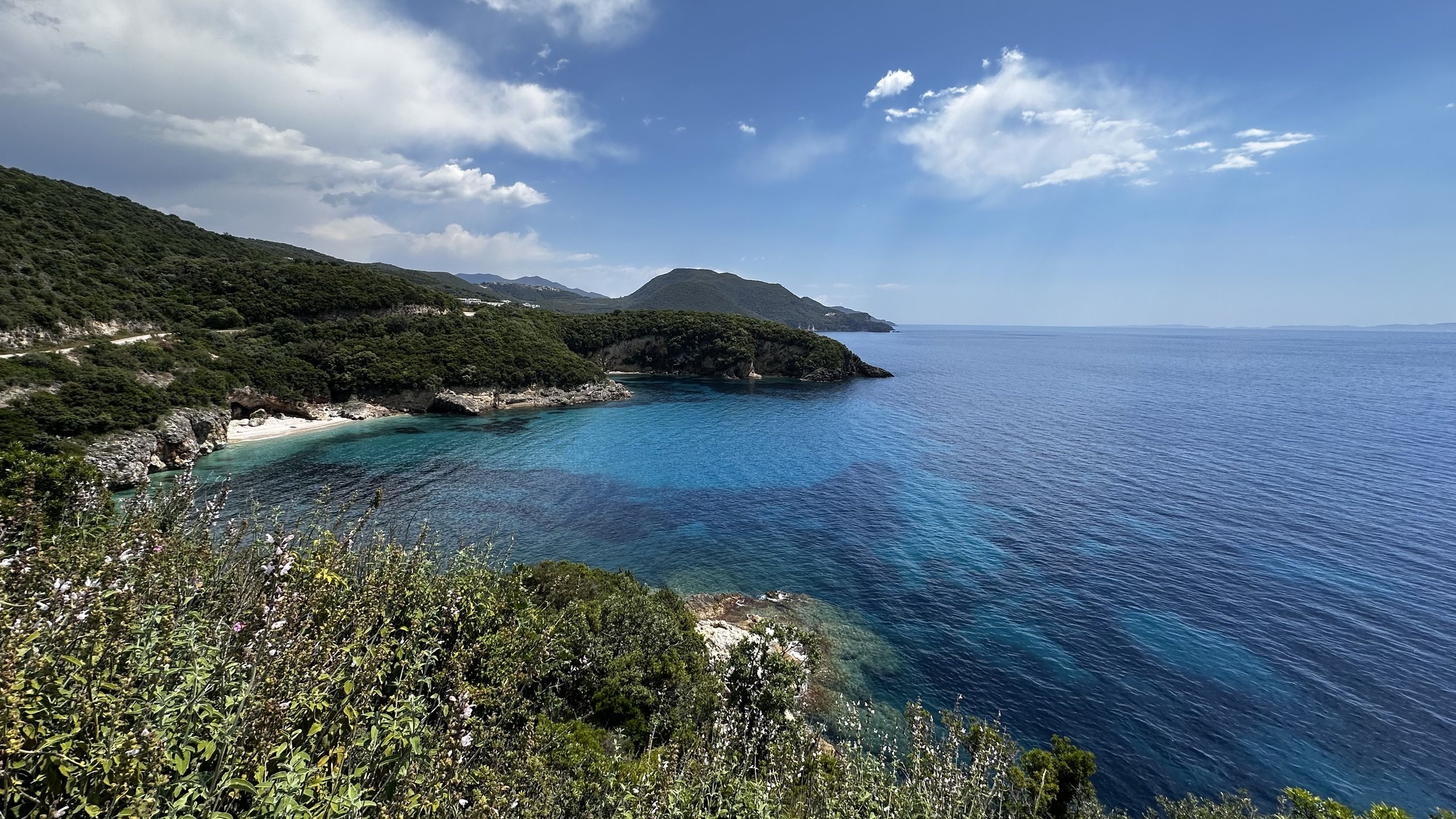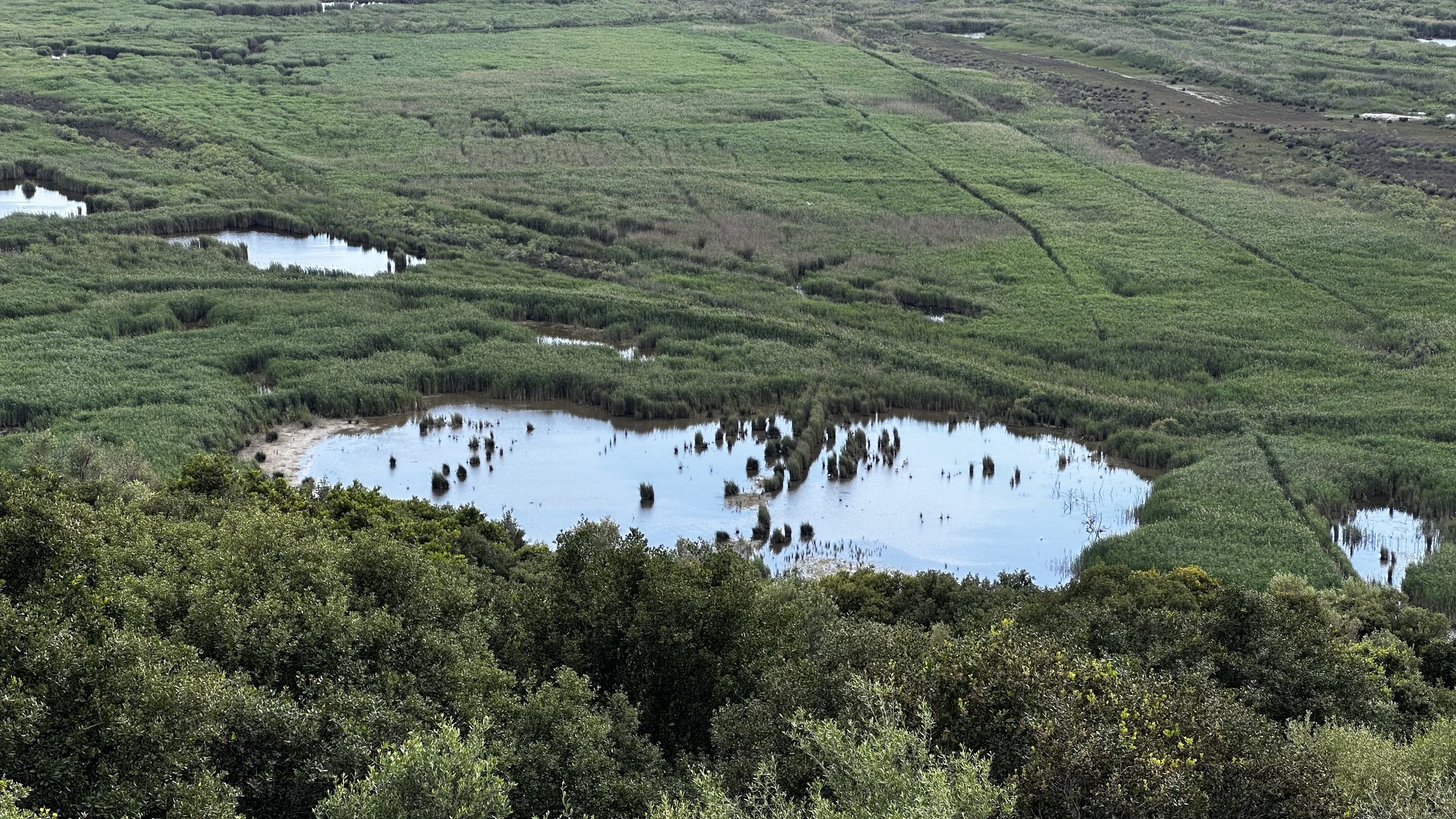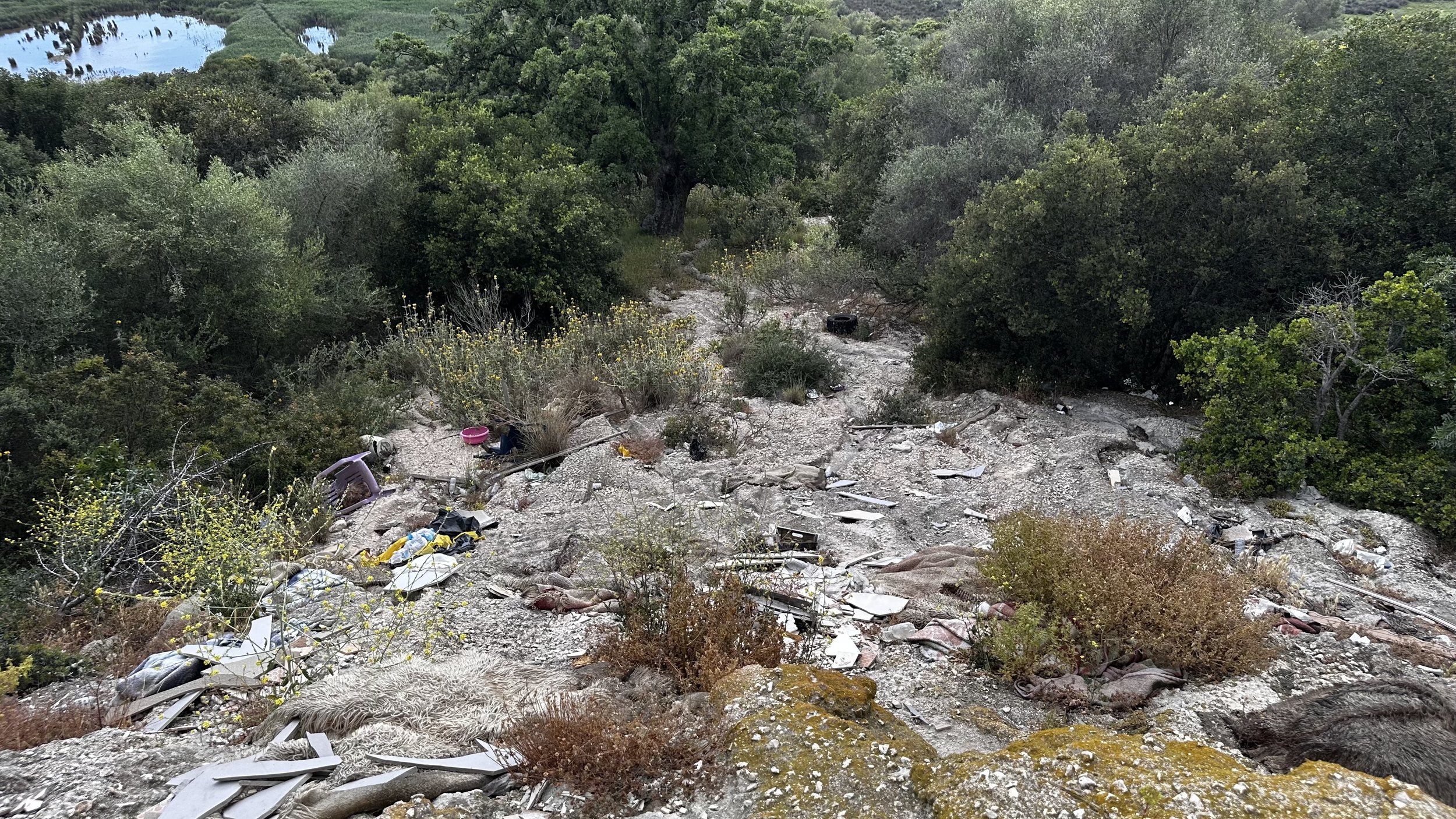Detours, Deltas & Disgrace: A Winding Descent to the Peloponnese
On the road to the Peloponnese, I passed stunning hidden beaches and the wild beauty of the Kalamas Delta—an unexpected wonderland of water and wildlife. But a sudden patch of trash in the heart of nature snapped the spell.
On my determined path south—finally—towards the Peloponnese, I was seduced into stopping again and again. The coast unfolded in cinematic silence: jewel-toned coves, cliff-hugging roads, and the kind of water that turns your pupils into wide-lens apertures. Little bays I never planned for became mandatory pauses. I didn’t swim. I stared.





And then—unexpectedly—a landscape straight from satellite imagination: a vast green-laced web of water and earth. It was the Kalamas Delta, formed where the river Kalamas (Thyamis in ancient times) meets the Ionian Sea. This lagoon-like ecosystem, stretching between wetland, estuary and alluvial plain, is a protected Natura 2000 site, home to flamingos, herons, otters, and even jackals. The ancient Greeks revered this river; it was once the sacred border between Epirus and Thesprotia. Now it’s a geopolitical and ecological frontier—beautiful, endangered, alive.
But then came the punch in the gut: a slope of dumped trash just metres from this biodiversity jewel. Carpets, broken appliances, garbage—like an open wound. This wasn’t just littering; it was vandalism of the sacred. Greece, and all of us, need to do better.
I couldn’t stay long. After losing six days, I had to keep descending. But these spots—those hidden bays, that surprising delta—are marked. They’ll get their time. And hopefully, one day, the trash won’t.
Out There > Motorhome Trip Spring 2025 Western Balkans and Greece > Kalama Strait
